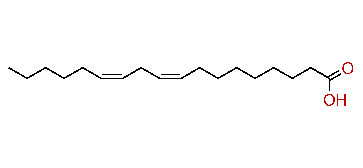DEFINITION
Asthma is a chronic inflammatory disease of the airways, characterized by broncospams and hypersecretion of mucus,due to an increased airway responsiveness to various stimuli,such as:
- Allergens (dust mites,pet dander,seasonal pollens)
- Air pollution and tobacco smoke
- Exercise and hyperventilation
- Emotional stress
Risk factors also include genetic predisposition and family history,sex,obesity.
SYMPTOMS
Classic symptoms include:dyspnea,wheezing,non-productive cough,sense of constrinction in the chest,shortness of breath.
EPIDEMIOLOGY
Asthma affects 300 million people wordlwide (Adults: 10–12%;Children: 15%).
The prevalence of asthma increased from 4.1% in 1964 to 28.4% in 2004,probably as a consequence of changes in the environment,in lifestyle and dietary habits.

Trends in UK consumption of total vegetables, fresh green vegetables, and potatoes since 1942.

Trends in UK consumption of saturated fats, polyunsaturated fats and vegetable oils since 1966.
PATHOGENESIS
It is thought that changes in dietary habits have contributed to the recent increases in asthma in population.
In particular,the decrease of antioxidant intake (fruit,vegetables) and the increased n-6 polyinsaturated fatty acid (PUFA) (margarine,oil,mayonnaise,popcorn,chips,and others ) intake reduce lung antioxidant defenses and increase airway susceptibility to oxidant damage,resulting in inflammation and asthma.
The most common PUFA in diet is linoleic acid,found in the lipids of cell membranes and abundant in many vegetable oils.Linoleic acid is converted by Δ6 desaturase in gamma-linoleic acid,which is converted in turn in dihomo-gamma-linoleic acid by elongase;finally,Δ5 desaturase converts dihomo-gamma-linoleic acid in arachidonic acid.Arachidonic acid can be metabolized by COX and lipoxygenase enzymes to produce prostaglandins(PGs), thromboxanes(TXs),leukotrienes(LTs).
Linoleic acid


Arachidonic acid is a key inflammatory intermediate as it is a precursor in the production of eicosanoids.In particular,cicloxygenase (COX) and peroxidase use arachidonic acid to produce prostaglandin H2,wich is in turn converted in prostacyclin,thromboxane and prostaglandin E2 (PGE2).
Lipoxygenase converts the same substrate in HPETE in order to obtain leukotrienes.

Diet as a risk factor for atopy and asthma,2005
PGs,TXs,LTs have proinflammatory activity,promoting Th2 phenotype.
It is known that PGE2 acts on immature dendritic cells throught E prostanoid receptors (EP),up-regulating the production of Th2-attracting chemokines,especially CCL17 and CCL22,promoting the Th2 cells recruitment and persistent immunoglobin E synthesis .In addition,PGE2 decreases IL-12 levels,down-regulating Th1 differentiation from naïve T cells.
Histamine and prostaglandin E up-regulate the production of Th2-attracting chemokines (CCL17 and CCL22) and down-regulate IFN-gamma-induced CXCL10 production by immature human dendritic cells,2006
Th2 cells have an important role in inflammation,as they release different kinds of cytokines:
- IL-4,acting on B cells,promotes IgE production
- IL-5 promotes eosinophil recruitment and activation
- IL-13:in airways mucosa,promotes mucus production.
Persistent IgE synthesis leads IgE to bind IgE-receptors on mast cells in airways mucosa, upon contact with allergen;when the organism meets the allergen,mast cells release:
- Histamine,which increases the permeability of the capillaries
- Eparin,an anticoagulant
- Cytokines,which promote eosinophil,neutrophil,T cells recruitment and activation.
On the other hand, long-chain omega-3 polyunsaturated fatty acids (n-3 PUFAs) have beneficial effects on chronic inflammatory diseases.
One of their potential mechanism can be related to the activation of protein phosphatase,which
induces cell cycle arrest and apoptosis,down regulating cell proliferation.
Omega 3-fatty acids: health benefits and cellular mechanisms of action,2004
Morever,they reduce nuclear factor κ-B activation and increase secretion of adiponectin,an anti-inflammatory adipokine.
Health benefits of n-3 polyunsaturated fatty acids: eicosapentaenoic acid and docosahexaenoic acid,2012
Both n-3 PUFAs and n-6 PUFAs share same enzymes in their intracellular pathways,so they compete with one another and the presence of one affects the pathway of the other.

Amounts of n-3 PUFAs and and a low omega-6/omega-3 ratio antagonize prostaglandin E2 formation,whereas amounts of n-6 PUFAs and a very high omega-6/omega-3 ratio promote the formation of pro-inflammatory prostaglandins and the pathogenesis of many diseases,including inflammatory and autoimmune diseases.
The importance of the omega-6/omega-3 fatty acid ratio in cardiovascular disease and other chronic diseases,2008
CONCLUSION
Airways hypersensitivity due to persistent IgE synthesis,airways constriction due to eosinophil infiltration and activation (release of major basic protein),hypersecretion of mucus due to chemokines are all signs of an asthma attack.
Finally,n-6 PUFAs intake should be reduced and n-3 PUFAs intake should be encouraged to prevent the occurance of inflammatory diseases.
